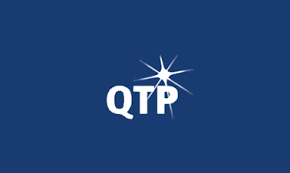
QTP TESTING
QTP TESTING: In general, the term QTP stands for Quick Test Professional, and nowadays, it is also known as UTF or Unified Functional Testing. It is generally considered to be an automated functional testing tool that helps testers while performing regression testing. However, it is considered one of the most advanced tools as it does not require the tester's attention all the time, or we can say in simple words that it does not force them to keep an eye always. In additi
1.Introduction
Overview of Test Automation
- Ways of Testing
- Disadvantages of Manual Testing
- Advantages of Test Automation
- Drawbacks of Test Automation
- Test Automation
- Types of Test Automation
- Functional Test Automation
- Types of Test Tool
- History of QTP
- Basic Features of QTP
- The installation process of QTP
Basic Features of QTP
- General FrameWork to learn any Automated Tool
- Types of Automated Tools
- Version History
QTP Test Process
- Planning
- Generating Basic Tests
- Enhancing Tests
- Debugging Tests
- Running Tests
- Analyzing Test Results
- Reporting Defects
2.Key Elements of QTP
Key Elements of QTP
- Test Pane
- Active Screen
- Data Table
- Debug Viewer Pane
- Tool Options
Recording & Running Tests
- Record and Run Settings
- Recording Process
- Running Process
- Recording Modes
3.Object Repository
Software objects
Types of the object in QTP
- Runtime Objects
- Test Objects
Object Repository
- Local Repository
- Shared Repository
Operations on Object Repository
- Adding Objects
- Renaming Objects
- Deleting Objects
- Associating Object Repositories to an Action
- Exporting Local Object
- View Options
- Spying Objects
Keyword driven methodology
- Generating Tests Manually through Expert view
- Generating Steps through Keyword view
4.Object Identification Configurations
- Normal Identification
- Mandatory Properties
- Assertive Properties
- Smart Identification
- Base filter Properties
- Option filter properties
- Ordinal Identifier
5.Checkpoints & Output Values
Inserting Checkpoints
- Standard Checkpoint
- Text Checkpoint
- Text Area Checkpoint
- Bitmap Checkpoint
- Database Checkpoint
- Accessibility Checkpoint
- XML Checkpoint
Inserting Output values
- Standard Output value
- Text Output value
- Text Area Output value
- Database Output value
- XML Output value
6.Parameterization and Synchronization
Synchronization
- Definition
Where Synchronization is required:
- Process
Ways of synchronization
- Inserting the synchronization point
- Increasing the default time/ Increasing Tool default synchronization time
- Inserting the wait statement
Parameterization
- Definition
- Process
Ways of Parameterization
1. Through data driver wizard
2. Through keyword view
3. Manually
7.Actions, Environment Variables
Actions
Types of actions
- Non-reusable Actions
- Re-Usable actions
- External Actions
- Creating an Action
- Splitting Actions
- Renaming an Action
- Deleting an Action
- Making a Reusable/Non-Reusable
- Calling an existing Action
Environment Variables
- Built-in Variables
- User Defined Variables
- Defining, modifying and associating environment variables
8. Transaction Points, Adding Comments
- Start Transaction & End Transaction
- Timer Function
- Defining Test Results
Adding Comments
- Purpose of Comments
- Comment a Block of Statements
- Uncomment a Block
9.Debugging Tests, Batch Testing
Debug Commands & Break Points
- Step Into
- Step Over
- Step Out
Automation Object Model
- Automating Quick Test Operations
10. Recovery Scenarios
Recovery Scenarios
Trigger events
- Pop-Up window
- Object State
- Test Run Error
- Application Crash
11. Built-In Functions/ Inserting the Programmatic statements
- Comments
- Utility statements
- Normal statements (or) Object calls
- Conditional statements
- Looping statements
12. File system object
File system Object
- Creating Files
- Reading Data
- Writing Data
- Creating Folders
13. Regular Expressions
- Understanding & Using Regular Expressions
- Handling Dynamic Objects
- Defining Regular Expressions
14. Batch Testing
- Test Batch Runner
- Creating Test Batches
- Providing permission to Test Batch Runner
- Running Test Batches
- Running Partial Batches
15. Introduction, Basic Framework
- Automation Framework, Types of Framework
- Creating Folder Structure
- Creating & Storing Automation Resources
- Organizing & Managing Resources
- Generating Driver Scripts
- Generating Initialization Script (AOM Script)
1.Linear Frame Work
2.Modular FrameWork /Reusable actions
3.User-defined Functions/Keyword driven Frame Work
4.Data-Driven Frame Work
5.Hybrid Frame Work
16. Introduction, QTP Scripting
- QTP Descriptive Programming for QTP
- VB Script for QTP
Test Management tool from HP (Mercury Interactive)
Quality Center
OTHER DEFECT TRACKING TOOLS:
- Bugzilla
- MD tracker
Enroll For Course Now